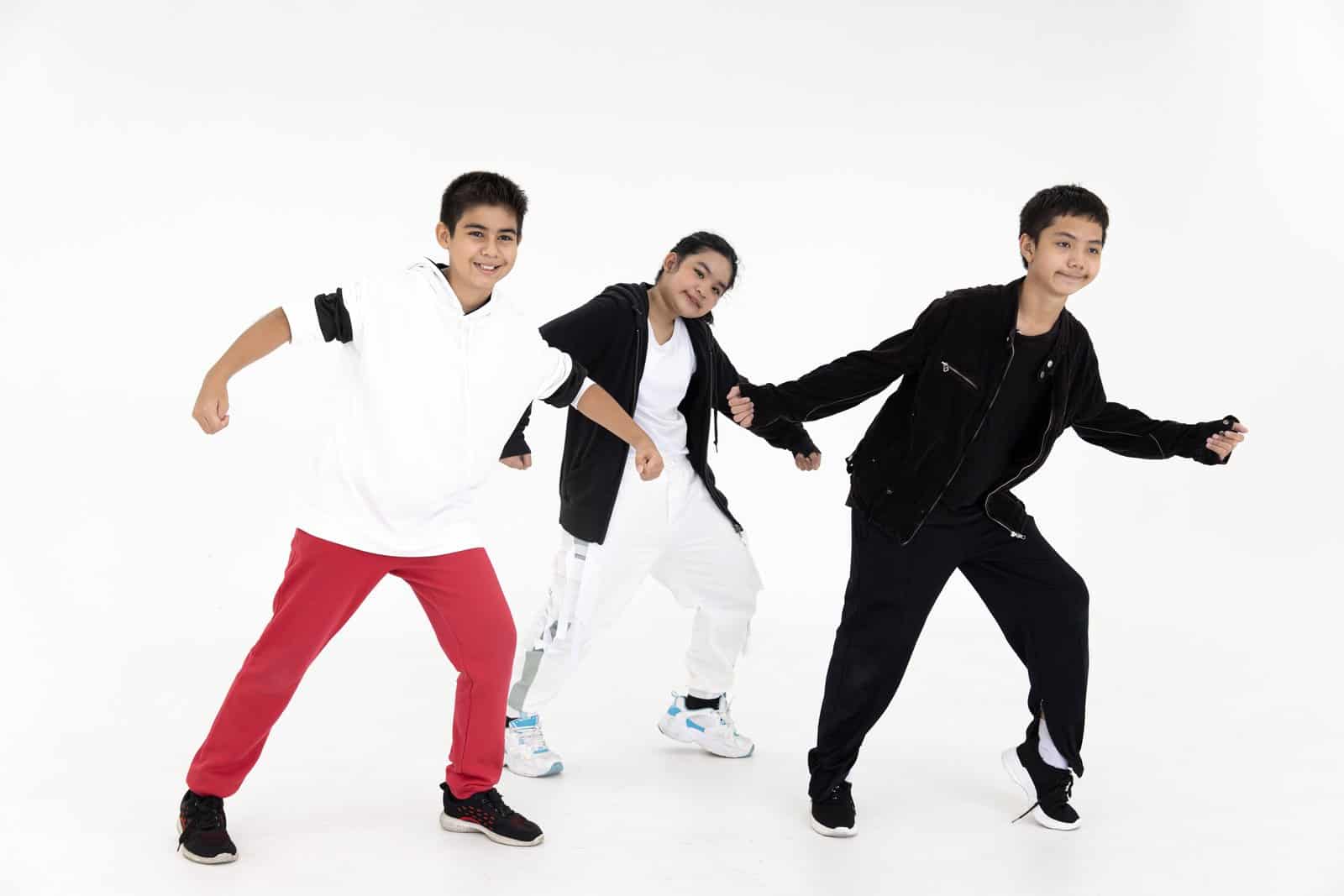
25 reasons why dancing for kids is important
Although dancing classes might be an excellent way to meet new people and get some exercise, studying dance has much more advantages. Dance as an art form offers the benefits of studying art and the advantages of exercising. In addition, dance is an activity that parents looking for the advantages of a happy and healthy child should consider.
Children of all ages benefit from dance courses and lessons because they improve their problem-solving abilities, mental flexibility, creativity, physical agility, coordination, teamwork and collaboration capabilities, and self-confidence. In addition, parents who enroll their kids in dancing courses can be confident that the lessons they learn will help them inside and outside the studio.
Parents need to be aware that dancing promotes self-esteem in children, teaches them how to collaborate with others in a team, and gives them a creative outlet for stress release. It also teaches discipline and dedication. Kids can benefit from dancing in so many ways, but it’s crucial to keep in mind that it’s also enjoyable and has the potential to become a career or a passion for life.
Types of dancing for kids
Jazz
Jazz dance is a type of dance that mixes elements of African American folk dances, modern dance, and classical ballet. Its lively pace, rhythmic nature, and fluid movement stand out. Jazz dance is fantastic for kids because it fosters their musicality and coordination.
Hiphop
A popular dance form known as hip-hop was developed in the Bronx in the 1970s. Its funk beats, energetic movement, and street-style taste define it. Children benefit significantly from hip-hop dance because it keeps them active and expressive.

Ballet
A traditional dancing style that goes back to the Renaissance is ballet. Its delicate feet, beautiful positions, and exact motions distinguish it. Children benefit much from ballet since it teaches them grace and discipline.
Tapping
An early form of dance called tap was developed in the 1800s in the United States. It is distinguished by its rhythmic nature, uplifting tempo, and percussion-based footwork. Children benefit significantly from tap dancing since it fosters their sense of rhythm and music.

Importance of dancing for kids
- Dance encourages neurological growth since it stimulates a child’s brain when they appreciate music and learn to dance to its rhythms. This enhances both their cognitive skills and neurological health. Your kid can increase their endurance, stamina, and vitality through dancing, maintaining their physically healthy. Additionally, it promotes the growth of muscle and strength. Remember that since exercise involves cardio, it also supports the health of their hearts. It may be an excellent alternative for kids who dislike exercise because it is expressive.
- Flexibility is enhanced by dance: Look at dancers. Dance can help your child grow more flexible, but they don’t have to become performance artists. Injury risk can be reduced via flexibility. Additionally, it expands your range of motion and enhances blood circulation.
- Dance is great for your spine and helps your child carry themselves better. Dancers are instructed to manipulate their bodies to maintain their weight effectively. Your child’s posture will get better if they learn to dance. Their back, shoulders, neck, and bones will benefit from not leaning back.
- Dance enhances balance: Like what was stated above; dancing also enhances balance. Your original position improves as you understand the proper way to hold yourself. This helps your muscles and back as well as keeps you centered. Being more elegant makes you less prone to accidents and injuries.
- Dance also teaches spatial reasoning and develops spatial awareness. You build your perception of distance. It improves your understanding and judgement.
- Dancing has a rhythm: Although you may not feel or love rhythm, having a sense of it might benefit your general health. It strengthens your brain and enhances cognitive reasoning, like music. Additionally, it improves your mental health and keeps you feeling relaxed.
- Dancing is a way to release tension. While your kid shouldn’t dance until exhausted, it can remove any unresolved hyperactivity. Additionally, it can enhance their routine, focus, and sleep.
- Dancing increases self-assurance: This is obvious. Your kid will feel happy if accepted into a group and allowed to shine. Your child can take charge by leading the dance. They’ll get used to performing in front of people and feel better about themselves, which helps them in any performances or public speaking.
- Dance promotes art appreciation: If your child practices an art form, their comprehension of the art form will also advance. This widens their knowledge and tastes. Kids will experience a wide range of musical genres and cultural influences through dancing.
- Your child is inspired and driven by dance: Your child will learn to endure just like in any other sport or hobby. It is frequently forgotten that dance will help your kid learn from failure and strive. This alone boosts confidence.
- Dance promotes healthy behaviors. Dance is routine-based. Your kid will learn the importance of punctuality, keeping their word, and practicing. Life skills like cooperating, being accountable, and planning are also taught. Moreover, they will learn dedication and work hard.
- Dance improves cognitive function: Your child’s focus, concentration, memory, and pattern recognition can all be enhanced through dance. Even problem-solving and creativity can be taught through it. Your child will begin choreographing their pieces once they feel secure enough to try.
- Dance can enhance communication: Your kid will become more adept at communicating thanks to dance’s many cognitive advantages and confidence-boosting effects. Dance is a means of storytelling and self-expression. These abilities will apply to communication and other aspects of their lives.
- Dance is creative: This one also needs no explanation—the art of dancing. Your child’s imagination will be stimulated if they participate. Freestyle dancing is always encouraged. Your child’s imagination will increase once they learn how to express themselves uniquely.
- Dance enhances self-worth: Consider how this can help your kid become more self-aware. They will love themselves more if they have something to be proud of. This might even be a crucial strategy against trauma, sadness, anxiety, and bullying. Additionally, dancing promotes empathy, which may help to lessen these issues further.
- Dance is enjoyable: It may sound cliché but enrolling your child in a dancing class would be preferable to watching TV all day or having them hang out with the wrong crowd. Kids do not want to remain inactive. Your child’s mood can be lifted through dance.
- Body language is highlighted in dance: Dance can and will improve your child’s nonverbal communication skills. They will learn to read people better and improve their body language. A helpful life skill is this.
- Everyone needs a way to express their emotions, and dance provides that. The emotional needs of your child can be communicated via dance. It is therapeutic to dance. It can significantly control both your child’s conduct and emotions. As a result, it discharges any stress and frustration.
- Dance may keep your kid on the right path: Any hobby or activity can give your kid’s life greater significance. They will feel purposeful because they are motivated or desire to succeed. Though your child does not have to pursue dance professionally, keep in mind that it will open doors of possibility if they do. Said it offers them a goal to strive for.
- Dance is a social activity: Dancing promotes interaction with others. Usually, there are not any one-on-one dance lessons. Your kid will get the chance to meet some new friends. Because of this, they will have a place to fit in and feel a part of the community. We learn to coordinate through dance, and this fosters empathy as well.
- Dance requires teamwork: Everyone has a role to play in a performance or routine, encouraging cooperation and collaboration. Dance is not a competitive sport when not taken seriously or professionally. Everyone has a role to play and is vital to the overall picture.
- Dance can promote tolerance and respect since it is inclusive. Your kid will meet people from all diverse backgrounds. They will gain more knowledge about equality and society. They will learn to appreciate one another because there is a component of safe and controlled physical touch. They could even collect information on various genders, sexualities, and identities.
- Dance requires practice: Your child may apply everything they learn in dance class in the classroom, including respect, discipline, and routine. This is a significant benefit. Their grades might go up if they gain time management skills, dedication, and discipline. They are motivated to work more by dancing, and their academic performance will undoubtedly benefit.
- Dance develops character: If dancing inspires in your child superior manners and self-assurance, this will translate to their academic performance. They will be happier, more comfortable, and more outgoing. Additionally, they will learn to respect themselves, their colleagues, and their leadership. They will behave better and develop into better people.
- Dance is a skill: Remember that dance class is intellectual in and of itself. Your kid is growing, learning, and acquiring a new talent or skill. You can discover that people take it seriously if they like it. There are numerous chances to explore, and it is a career that is just as genuine as any other.
Applications for dancing for kids
Why not subscribe to our LearningMole Library for as little as £1.99 per month to access over 1000 fun educational videos.


Leave a Reply